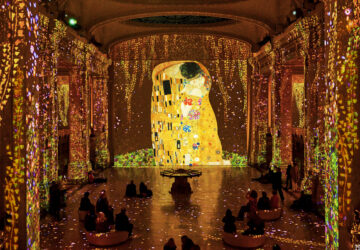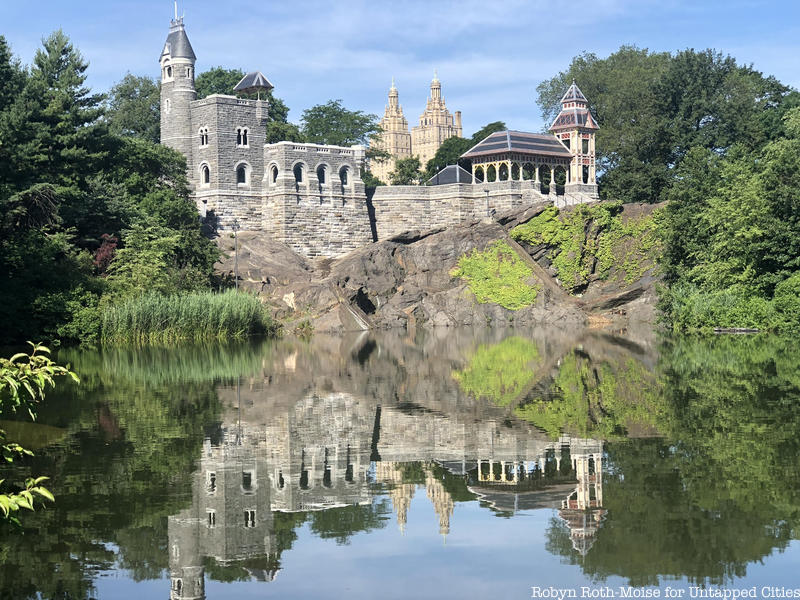
Even though Central Park is one of New York City’s most famous attractions, its 800+ acres of sprawling meadows, forests, rocky outcroppings, lawns, and bodies of water still hold many secrets waiting to be unveiled. We’ve covered the history of Central Park and its many hidden gems in a variety of different articles, from exploring what wasn’t in the original plan to shedding light on the work of the park’s overlooked architect. Here, we’ve compiled 10 of our favorite secrets of this famous park!
1. The Hidden Code on Central Park’s Lampposts

Unless you’re obsessed with lamp posts, you probably haven’t noticed the embossed numbers that are on a metal plaque bolted on each of Central Park’s cast iron lampposts, designed by Henry Bacon. The plaques can be either on the base or on the post itself, oriented appropriately. The first two or three digits actually denote the nearest cross street, and the last digit tells you if you’re closer to the east or west side of the park. An even number means east, an odd number means west.
2. The Hidden Survey Bolt in Central Park
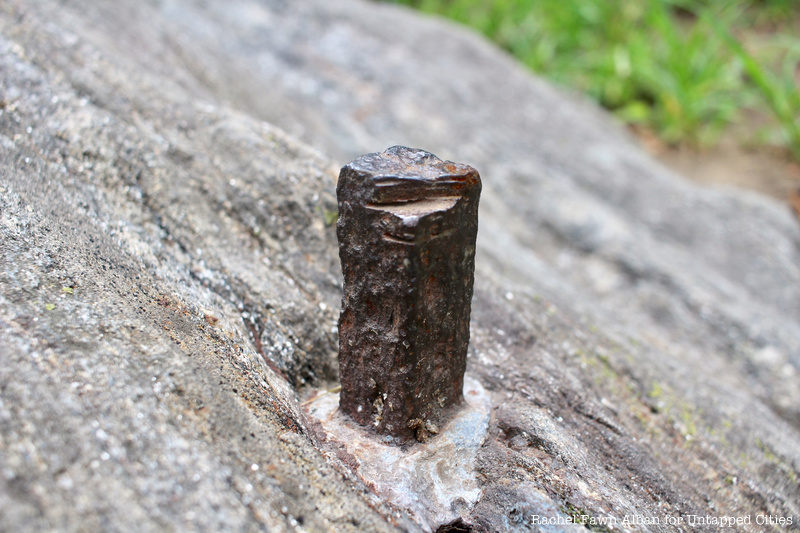
This bolt is believed to be one of the original survey bolts from when the Manhattan grid was first planned in 1811. As Central Park was not a part of the original plan, street intersection points may have been marked but left to remain since no intersection was actually built here. The bolt is known to be in the park, but the exact location is kept a secret for fear that it will be stolen or destroyed. After some intense searching of both the internet and park, you might be able to find it like we did. We’ll take you to see the bolt on our upcoming tours of Untapped Central Park!
3. A Remnant of Vanderbilt’s Estate is the Entrance to a Garden
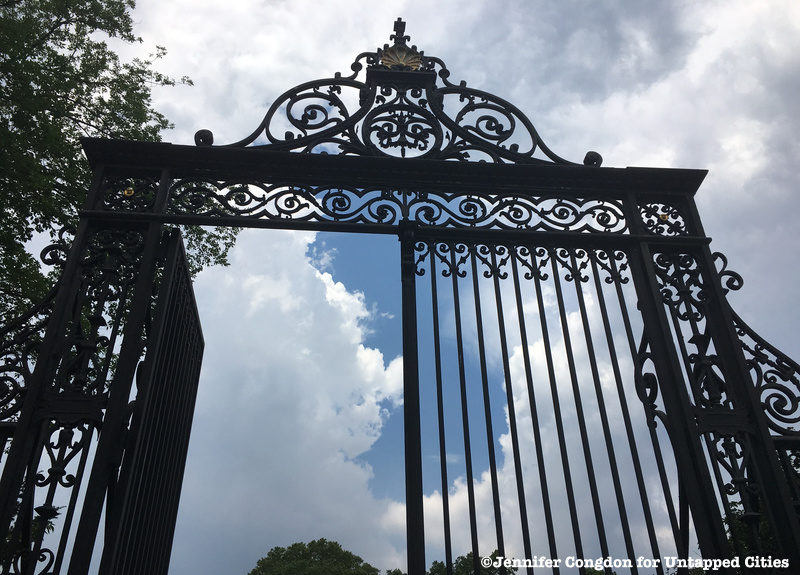
The Conservatory Garden is a quiet, lesser-traveled part of the park where you can enjoy a peaceful stroll through French, English, and Italian gardens. From 1898 until 1934, this area was covered by a massive glass conservatory (hence the name). Visitors enter the garden through massive wrought-iron gates. These gates were once part of the estate of Cornelius Vanderbilt II. Designed by George B. Post and forged in Paris in 1894, the gates survived the estate’s demolition in the 1920s. Bergdorf Goodman stands where the mansion once was on the corner of 57th Street and 5th Avenue. Vanderbilt‘s daughter, Gertrude Vanderbilt Whitney donated the gates to Central Park in 1939.
4. NYC Drinking Water Flows in the Waterfalls of Central Park
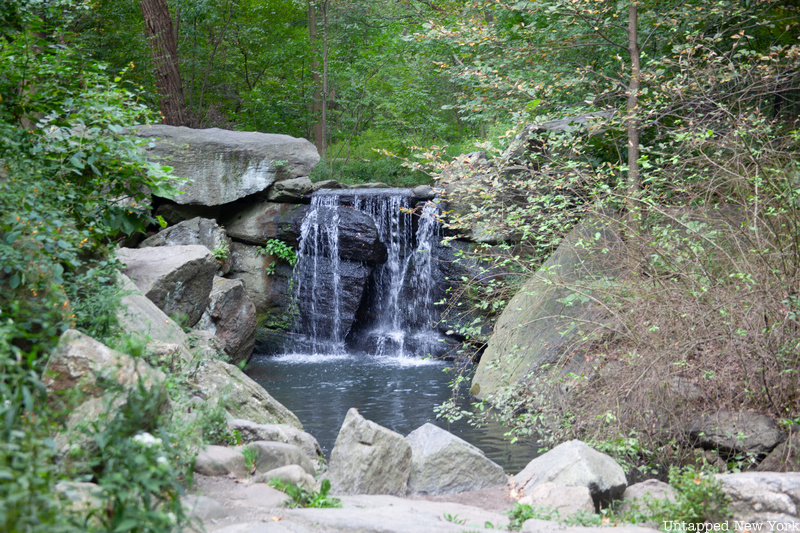
There are at least five waterfalls in Central Park, all completely man-made. Most of them are located in the Ravine. The water that flows here is actually New York City drinking water that comes from a 48-inch pipe hidden by the rocks at the Pool Grotto on West 100th Street.
5. The Remaining Historic Trees of Central Park
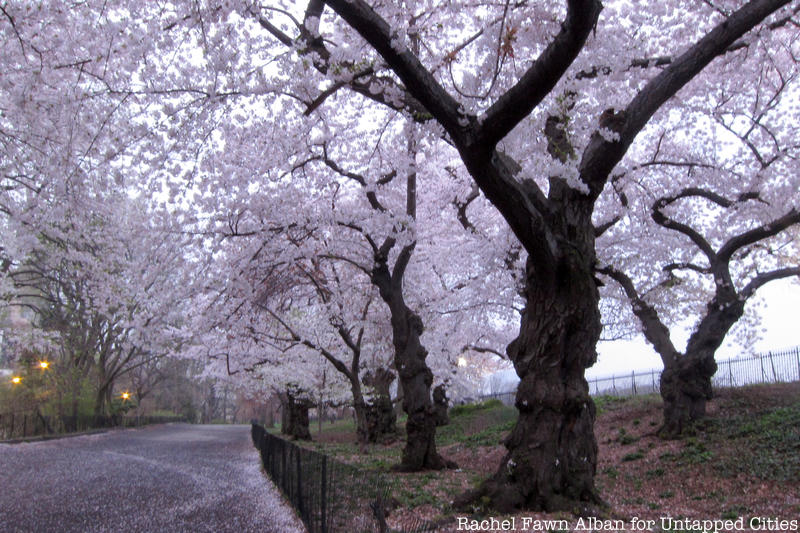
When Central Park was built, the city planted more than 270,000 trees and shrubs and preserved a handful of trees that were original to the area. Today, only about 150 trees are left from the time of Olmsted and Vaux, but many of the trees acquired over the years have a unique story. These Yoshino Cherry trees along the east side of the Reservoir may be the original trees presented as a gift to the United States by Japan in 1912. They are among the first trees to bloom in the spring, before the Kwanzan Cherry. The delicate blossoms drop quickly before the trees green out, and stay leafy for the rest of the season.
6. The Off-Limits Ramble Cave in Central Park
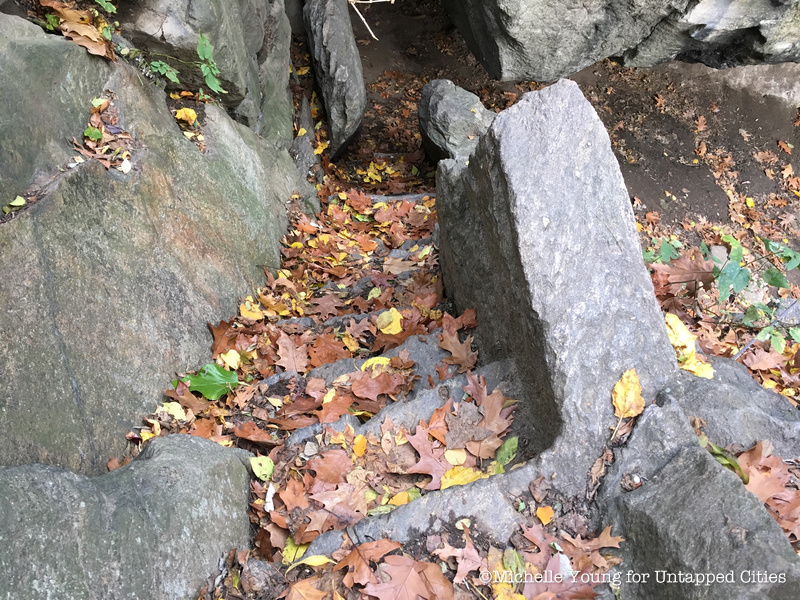
The Ramble Cave, also known as the Indian Cave, was created from a natural cave discovered during park construction and used by lake rowers who could leave their boats there and then go on to explore the area. Unfortunately, in the early 1900s, the cave was the site of several crimes and at least one suicide. In 1929 The New York Times reported that 335 men had been arrested for “annoying women” in the park, especially at the cave. Eventually, the cave became too dangerous to maintain, so it was sealed at both ends and the inlet was filled. Today, the cave is inaccessible but the entrance is visible from the path above and it adds a feeling of mystery to the area.
7. Remnants of the Lost Seneca Village in Central Park
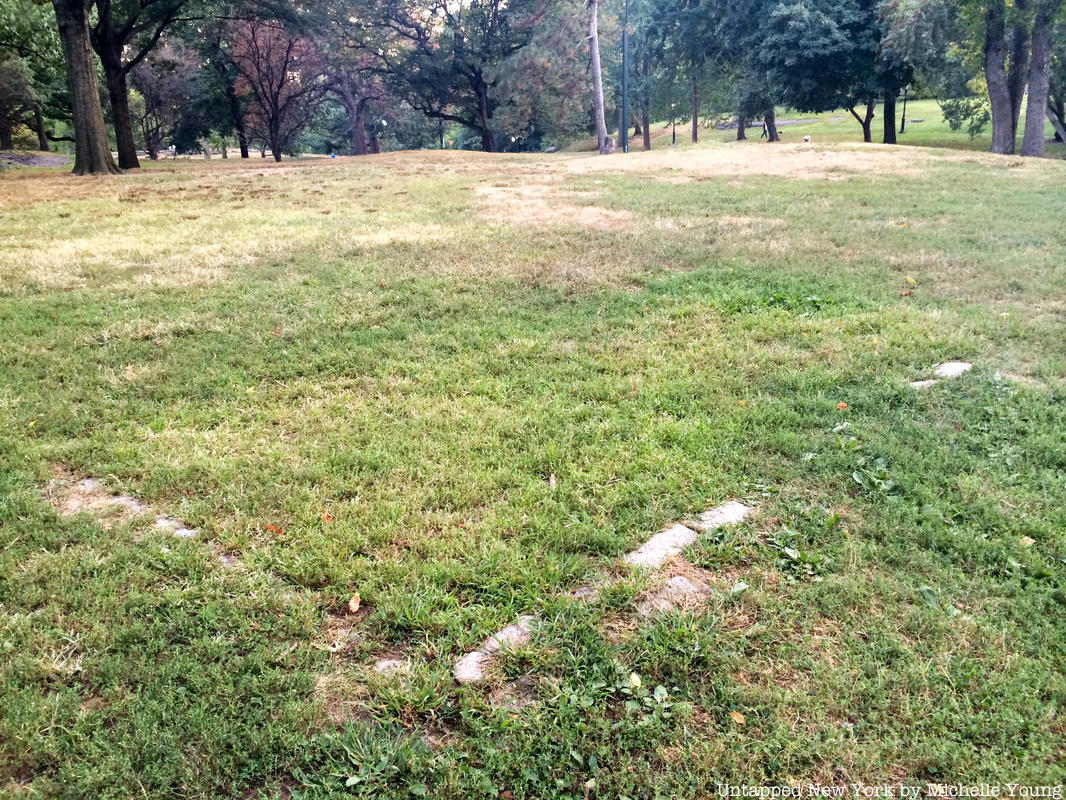
There was once a thriving village called Seneca located in what became Central Park, between 81st and 89th Street on the West Side. It wasn’t a shantytown or slum, like the rest of the settlements. This was a full-fledged middle-class town with over 260 residents, several churches, and a school.
With wooden houses on assigned lots, it gave African American residents what they needed to vote–their own land. However, in 1853 the city passed a bill authorizing the takeover of the land and paid the settlers off. By 1857, when the park officially opened, the settlement was gone. The granite bricks near the West 85th Street entrance are often erroneously said to be the remnants of a foundation of a building in Seneca Village, but from speaking to the Central Park Conservancy Historian, Marie Warsh, it’s been determined they’re actually from a 1930s sandbox. There are foundations and other remnants hidden much further underground though!
8. The Secret Christmas Tree for Pets in Central Park
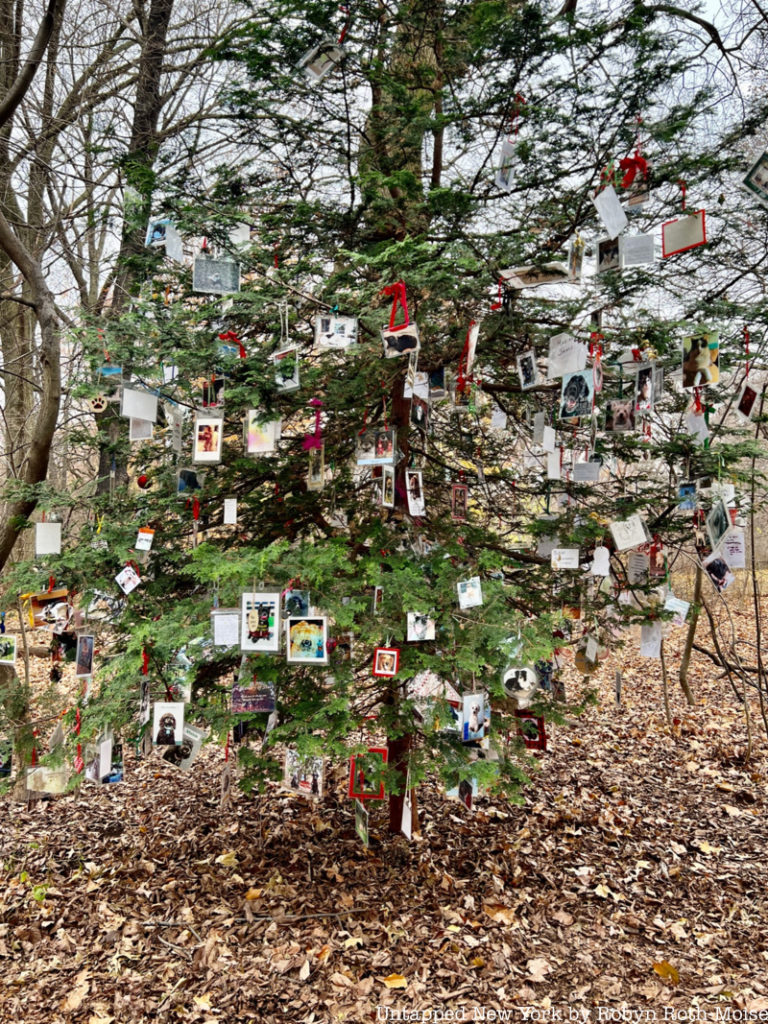
Deep within the woods of Central Park’s Ramble, those in the know gather every December at a secret spot to pay their respects to long-lost pets. Untapped New York first heard rumors of a pet memorial tree back in 2013. Since we first set out to find the secret Christmas tree years ago, the tradition has become more and more popular and media coverage has increased. Still, the exact location of the quiet spot remains a lovingly guarded secret, shared only with those who wish to honor their dearly departed furry friends.
9. A Revolutionary War-Era Cannon Was Found Fully Loaded
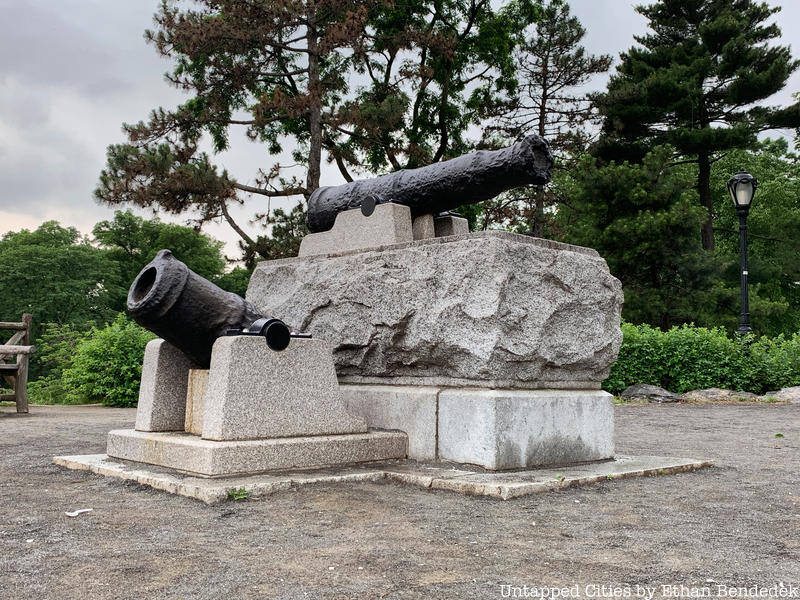
This cannon was used on a British ship that sank in the East River. After an anonymous donation in 1865, it was installed at Fort Clinton in 1905 where it remained on public display until 1996 when the Central Park Conservancy brought it indoors to protect it from vandalism. In 2013, however, workers from the Central Park Conservancy, while trying to refurbish and clean the cannon, found it to be still active — fully loaded with 800 grams of live gunpowder, cotton wadding and a cannon ball. The gun powder has since been removed, and the cannon is now reinstalled in Fort Clinton, at 107th Street, close to 5th Avenue. Another military remnant that can be found on the northern end of the park is the Central Park Blockhouse, a fortification built for the War of 1812.
10. The Buried Marble Arch
Lost beneath the surface of Central Park is the Marble Arch, one of the finest pieces of architecture in the park. Located at the end of the mall, on the opposite end of Bethesda Terrace, this arch was built entirely from marble. It was distinguished from other noble neighbors as the only bridge built of the material in the entire park. According to Edward J. Levine in the book Central Park Then & Now, the Marble Arch featured a drinking fountain, a semicircular pergola, and marble benches.
Like many things lost in New York City, we have Robert Moses and his quest for automobile domination to blame. In 1938, the Central Park drives were realigned to accommodate car traffic. The arch was demolished, smashed into pieces, and buried. Writing in 2008, Levine stated, “In recent years, a scarred chunk of marble has worked its way to the surface as if declaring “Here Lies Marble Arch.” Other lost bridges include Outset Arch (demolished for the Central Park Zoo) and Spur Rock Arch (or Oval Arch), demolished for Heckscher Ballfields.
Bonus: Remnants of the Old Reservoir
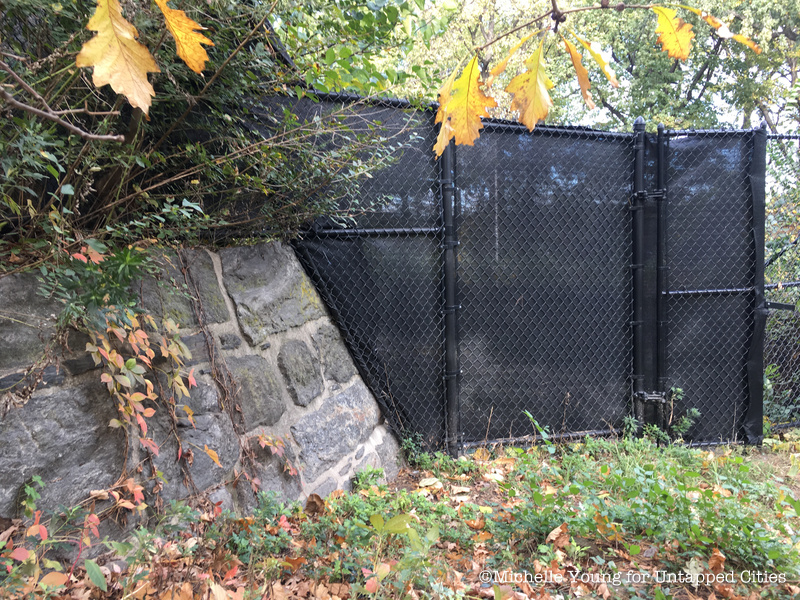
Before Olmstead and Vaux got their hands on the Central Park site, a rectangular reservoir had been built in 1842. According to the Times, they felt “cursed” by the gawky thing and designed around it. It was filled in and covered in the 1930s but you can see elements when you walk by the 86th Street police station inside the park. You can even see the rock wall inside the new police station’s conference room. There’s also a historic marker near the Shakespeare Theater. Remnants of another reservoir that used to stand on 42nd Street can be seen inside the New York Public Library.
Read more about the Forgotten Central Park Casino and see what Central Park could have looked like!
Written by Rachel Fawn Alban with additional reporting by Michelle Young, Alexander McQuilkin, and Nicole Saraniero. See more photography from Rachel Fawn Alban.



